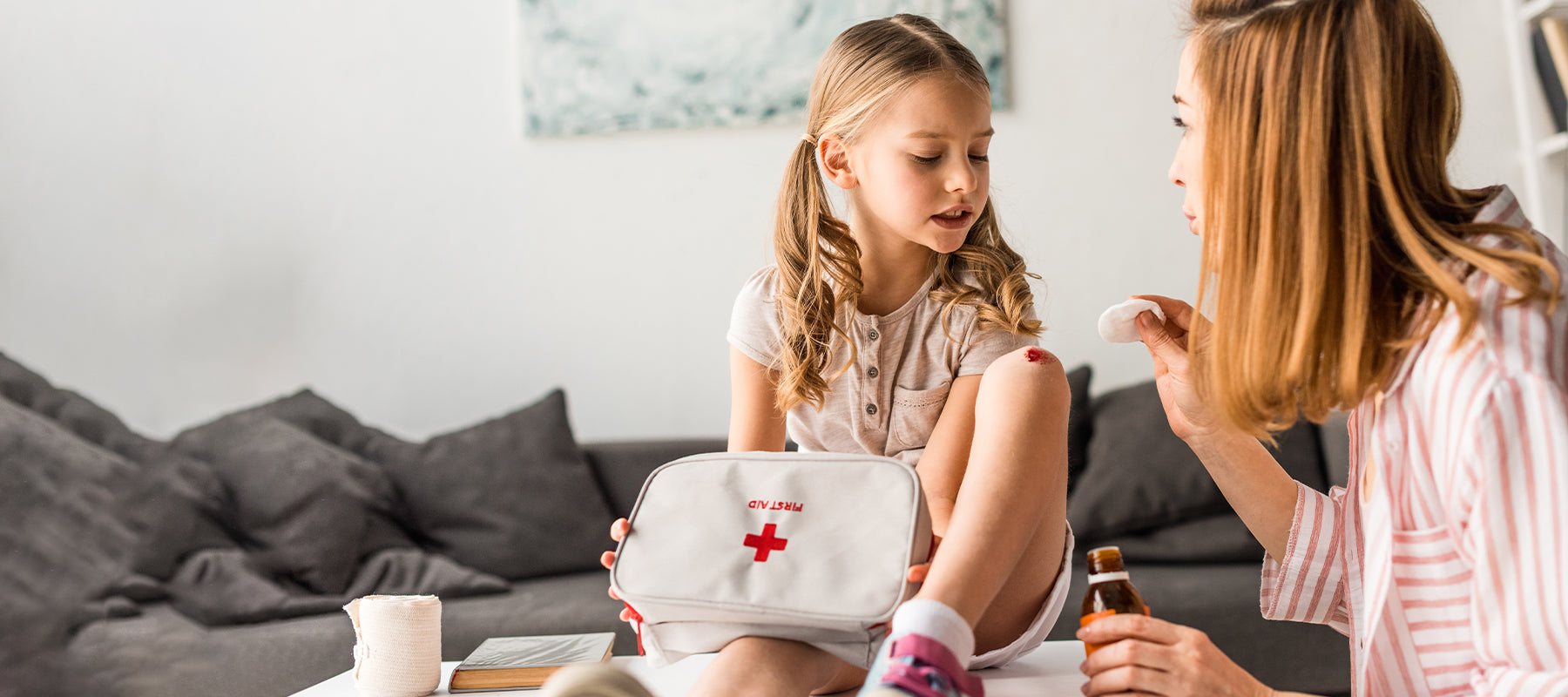
First Aid Basics Every Kid Should Know : Essential Tips to Keep Your Child Safe and Prepared
In today's fast-paced world, preparing your kids for any situation is just as important as teaching them how to ride a bike or tie their shoelaces. One of the most essential life skills that often gets overlooked is first aid for kids. Teaching basic first aid to children not only helps them stay calm during emergencies but also empowers them to act quickly and help others when needed.
So, how can we make this vital skill fun and engaging for kids? Keep reading to find out how you can teach first aid basics to children in a way that sticks—and is actually enjoyable!
Why Every Kid Should Know First Aid
Let’s face it, kids are adventurous. Whether it’s climbing trees, racing on their bikes, or just a typical playground day, bumps and bruises are inevitable. While you can’t always prevent accidents, what you can do is prepare your child to handle small injuries on their own.
The benefits of teaching basic first aid to kids go beyond just bandaging a knee. It’s about building their confidence, creating a sense of responsibility, and helping them understand the importance of health and safety. Plus, it's a skill they will carry with them for life.
Setting Up Your Family First Aid Kit: Kid-Friendly Essentials
First things first, you’ll need to put together a family first aid kit that’s accessible and easy for kids to understand. But instead of treating this as a boring task, why not turn it into a fun family project? Get your little ones involved in choosing the supplies and decorating the kit box. Label items with kid-friendly names like “Superhero Bandages” or “Magic Ointment” to make it less intimidating.
Here’s a kid-friendly list of essentials for your family first aid kit:
- Band-aids (in fun shapes and colors!)
- Antiseptic wipes
- Gauze pads
- Cold packs (the ones that magically freeze when squeezed are a hit with kids!)
- Small scissors
- Tweezers
- Thermometer
- Hand sanitizer
Store the kit in an easily accessible place and make it a habit to go through the items with your kids once a month. This is also a great way to remind them what each item is for.
Bandaging Like a Pro: Mastering the Basics
One of the easiest things kids can learn is how to use a bandage. Whether it’s for a scraped knee or a small cut, mastering this skill can give them a sense of accomplishment. Make it fun by having a "bandaging race" where everyone takes turns practicing on a stuffed toy or family member.
It’s also important to teach them the phrase "Clean it, Cover it, Protect it." Encourage your kids to remember to clean the wound with antiseptic wipes before applying the bandage. This makes the process second nature, so when a real scrape happens, they know exactly what to do.
Breathe Easy: Handling Minor Burns and Scalds
Whether it’s from touching a hot cup of chai or getting too close to a diya during a festival, minor burns are common in every household. Teaching your child how to handle burns and scalds can be made simple and memorable with a 3-step jingle: “Cool, Cover, Comfort.”
1. Cool: Immediately run the burn under cool water for 10-15 minutes.
2. Cover: Gently cover the burn with a clean, non-fluffy cloth.
3. Comfort: Encourage them to stay calm, as most minor burns heal quickly with proper care.
This little rhyme will help them easily remember the steps, turning a potentially scary situation into a manageable one.
The Heimlich Hero: What to Do If Someone Is Choking
Turn first aid into a real-life superhero lesson by teaching your child what to do if someone is choking. Introduce the "Heimlich Hero" game during role-play time. Kids love to pretend, and this makes learning first aid both fun and educational. Teach them how to recognize choking signs like holding the throat or being unable to speak.
For older kids, simulate gentle abdominal thrusts on a pillow or dummy. For younger ones, teach them how to encourage someone to cough or call an adult for help.
Stay Cool: Handling Nosebleeds with Ease
Nosebleeds may look scarier than they are, especially to kids. Teach them that nosebleeds are usually no big deal. You can make this lesson lighthearted by showing them how to tilt their head slightly forward and pinch the soft part of their nose while humming a calming tune for 10 minutes. This method not only stops the nosebleed but also distracts them from the sight of blood. Assure them that they should always inform a parent or adult whenever they get a nosebleed, no matter how small it seems. This allows you to keep an eye on their health and take further action if necessary.
Role-Playing First Aid: Making It Fun and Interactive
Role-playing is one of the best ways to teach first aid to kids. Use toys, stuffed animals, or family members to create different “emergency” scenarios. Maybe Teddy got a scrape while riding his bike, or Barbie has a splinter. Your child will love stepping into the role of a first-aid hero.
Teaching Emotional Stability: Staying Calm During Emergencies
Handling emergencies requires emotional stability. Teach your kids mindfulness exercises like deep breathing or counting to ten when they feel panicked. Explain that staying calm is the most important step in any emergency. This emotional skill is just as vital as knowing how to clean a wound or apply a bandage.
When to Call for Help: Knowing Emergency Numbers
While kids can handle small first aid tasks, it’s crucial they know when to call for help. Teach them the local emergency numbers in India, such as dialing 112. Practice what to say during an emergency call using a simple script: "My name is [Name], I’m at [Location], and I need help because [describe what’s happening]."
Empower Your Child with First Aid Skills
Teaching first aid to kids doesn't have to be boring or overwhelming. With creativity, you can turn it into a fun, family-centered learning experience. Empower your little ones to become the first-aid heroes of tomorrow, one bandage at a time!
By incorporating these basic first aid tips for kids into their daily lives, you’re not just teaching them a skill—you’re giving them the confidence and sense of responsibility they’ll need as they grow.
So, why not get started today?



Leave a comment
This site is protected by hCaptcha and the hCaptcha Privacy Policy and Terms of Service apply.